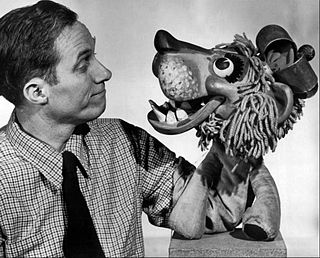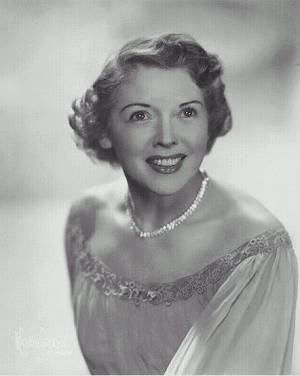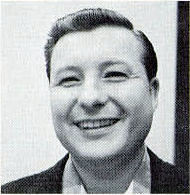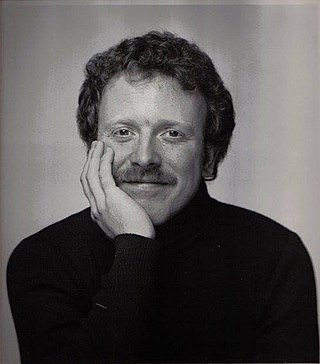Related Research Articles

Puppetry is a form of theatre or performance that involves the manipulation of puppets – inanimate objects, often resembling some type of human or animal figure, that are animated or manipulated by a human called a puppeteer. Such a performance is also known as a puppet production. The script for a puppet production is called a puppet play. Puppeteers use movements from hands and arms to control devices such as rods or strings to move the body, head, limbs, and in some cases the mouth and eyes of the puppet. The puppeteer sometimes speaks in the voice of the character of the puppet, while at other times they perform to a recorded soundtrack.

A marionette is a puppet controlled from above using wires or strings depending on regional variations. A marionette's puppeteer is called a marionettist. Marionettes are operated with the puppeteer hidden or revealed to an audience by using a vertical or horizontal control bar in different forms of theatres or entertainment venues. They have also been used in films and on television. The attachment of the strings varies according to its character or purpose.

Mr. Squiggle is an Australian children's television series, and the name of the title character from that ABC show. The show was presented on television in many formats, between its inception on 1 July 1959 and 1999, from five-minute slots to a one-and-a-half-hour variety show featuring other performers, and has had several name changes, originally airing as Mr. Squiggle and Friends. At its height, the program was one of the most popular children's programs in Australia and toured theatre and conventions, entertaining several generations who grew with the program. It became one of the longest-running children's programs on Australian television, despite originally only asked to fill a six week gap on the ABC's schedule.

Kukla, Fran and Ollie is an early American television show using puppets. It was created for children, but was soon watched by more adults than children. It did not have a script and was entirely ad-libbed. It was broadcast from Chicago between October 13, 1947, and August 30, 1957. Comedienne Fran Allison starred, interacting with puppets, Kukla and Ollie whose puppeteer was the show's creator, Burr Tillstrom. After the original run, the team appeared in other productions over several decades.

William Britton "Bil" Baird was an American puppeteer of the mid- and late 20th century. In a career that spanned over 60 years, he and his puppets performed for millions of adults and children. One of his better known creations was Charlemane the lion. He and his wife Cora Eisenberg Baird (1912–1967) produced and performed the famous puppetry sequence for "The Lonely Goatherd" in the film version of The Sound of Music. His son Peter Baird was also a puppeteer, and he continued his family's legacy until his own death in July 2004.

Franklin Burr Tillstrom was a puppeteer and the creator of Kukla, Fran and Ollie.

Frances Helen Allison was an American television and radio comedienne, personality, and singer.
Digital puppetry is the manipulation and performance of digitally animated 2D or 3D figures and objects in a virtual environment that are rendered in real time by computers. It is most commonly used in filmmaking and television production, but has also been used in interactive theme park attractions and live theatre.
Youssouf Coulibaly is a Malian puppet designer, puppeteer and storyteller from Mali.

Roy Thomas Brown was an American television personality, puppeteer, clown and artist known for playing "Cooky the Cook" on Chicago's Bozo's Circus.
Michael Earl was an American puppeteer. A four-time Emmy Award-winner whose credits include Mr. Snuffleupagus on Sesame Street (1978–1981) and Dr. Ticktock in Ticktock Minutes, a musical series of PSA's on PBS he also co-created, scripted and wrote lyrics for that garnered 11 Southern Regional Emmys, a 1998 National Emmy for Best Public Service Announcements, a Gabriel Award, 2 Parents' Choice Awards and numerous other honors. Earl performed the original Shrek character in a motion-capture development test film for DreamWorks and puppeteered lead characters in Paramount Pictures' Team America: World Police.
William B. Fosser's puppet production Opera in Focus is a troupe which performs opera and musical theater with some of the world's most sophisticated puppets. The Opera in Focus puppet opera theater is located in Rolling Meadows, Illinois.

A puppet is an object, often resembling a human, animal or mythical figure, that is animated or manipulated by a person called a puppeteer. The puppeteer uses movements of their hands, arms, or control devices such as rods or strings to move the body, head, limbs, and in some cases the mouth and eyes of the puppet. The puppeteer often speaks in the voice of the character of the puppet, and then synchronizes the movements of the puppet's mouth with this spoken part. The actions, gestures and spoken parts acted out by the puppeteer with the puppet are typically used in storytelling. Puppetry is a very ancient form of theatre which dates back to the 5th century BC in Ancient Greece. There are many different varieties of puppets, and they are made from a wide range of materials, depending on their form and intended use. They range from very simple in construction and operation to very complex.
James Edward Nelson was an American ventriloquist who appeared on television in the 1950s and 1960s. He is most famous for commercials for Nestlé chocolate featuring Farfel the Dog. He also hosted a children's show sponsored by Nestlé.

Farooq Qaiser was a Pakistani artist, newspaper columnist, TV show director, puppeteer, script writer, and voice actor. He was known as the creator of the fictional puppet character Uncle Sargam introduced in 1976 in children's television show Kaliyan. Farooq was also a cartoonist, newspaper columnist and wrote for the newspaper Daily Nai Baat in Lahore and under the pen name "Meethay Karelay".

Bradford Cody "Brad" Williams was an American puppeteer, designer and teacher. He died from injuries sustained in a car accident at the age of 42.
Ryan Dillon is an American puppeteer who has worked as an ensemble muppeteer for the Jim Henson Company since 2005. He also played Cooper and Paul Ball for the interactive series Sesame Street TV for Xbox Kinect, and appeared on all four seasons of the new CBeebies and co-productions of Sesame Street, The Furchester Hotel, and The Not-Too-Late Show with Elmo as Elmo. In March 2017, Dillon was nominated for the Daytime Emmy Award for Outstanding Performer in Children's Programming.
Thomas Hager Tichenor was an American puppeteer, most noted for creating the original puppets for the Broadway musical Carnival!.
Paul Vincent Davis is an American puppeteer. For over 30 years, he served as Artist in Residence at Puppet Showplace Theater in Brookline, Massachusetts. In the 1980s, UNIMA-USA awarded Davis five Citations of Excellence for his work.

Bernice Silver was an American puppeteer and activist, known in her field as "the Queen of Potpourri", referring to the combination of puppetry, storytelling, music, and politics in her open-mic performances.
References
- 1 2 3 4 5 6 7 8 9 10 11 "A Success in New York, Local Boy Prepares To Start Concert Tour". Suburbanite Economist. Illinois, Chicago. June 29, 1960. p. 10. Retrieved 13 April 2019– via Newspapers.com.
- ↑ McHatton, Martha (April 13, 1950). "Indianapolis on the Air". The Indianapolis News. Indiana, Indianapolis. p. 20. Retrieved 13 April 2019– via Newspapers.com.
- 1 2 "Marshall Izen To Appear At St. Mary's". The Winona Daily News. Minnesota, Winona. July 13, 1960. p. 11. Retrieved 13 April 2019– via Newspapers.com.
- ↑ Shull, Bill (2015). Philadelphia Television. Arcadia Publishing. p. 71. ISBN 9781439652183 . Retrieved 14 April 2019.
- 1 2 3 4 "Marshall Izen treats area youngsters with Detroit Youtheatre performance". The Times Herald. Michigan, Port Huron. February 10, 1974. p. 48. Retrieved 14 April 2019– via Newspapers.com.
- 1 2 "It Started With Horror Movie!". Suburbanite Economist. Illinois, Chicago. April 18, 1962. p. 17. Retrieved 14 April 2019– via Newspapers.com.
- ↑ "Award Winning Puppeteer Returns To Mishler Theatre". Tyrone Daily Herald. Pennsylvania, Tyrone. February 18, 1991. p. 7. Retrieved 14 April 2019– via Newspapers.com.
- 1 2 Alleman, Annie (February 12, 2016). "Puppeteer to bring 'Aesop's Fables' to life". Napierville Sun. Illinois, Napierville. pp. 1–9. Retrieved 14 April 2019– via Newspapers.com.
- 1 2 Wolf, Robert (January 10, 1986). "'Rags, Bags, Dragons' Lets Kids Try Hand at Puppetry". Chicago Tribune. Illinois, Chicago. Archived from the original on 14 April 2019. Retrieved 14 April 2019.
- ↑ "Pianist-Humorist Booked For Dec. 1 Performance". Battle Creek Enquirer. Michigan, Battle Creek. November 21, 1965. p. 10. Retrieved 14 April 2019– via Newspapers.com.
- ↑ "MARSHALL IZEN". The New York Times. Retrieved 11 July 2019.